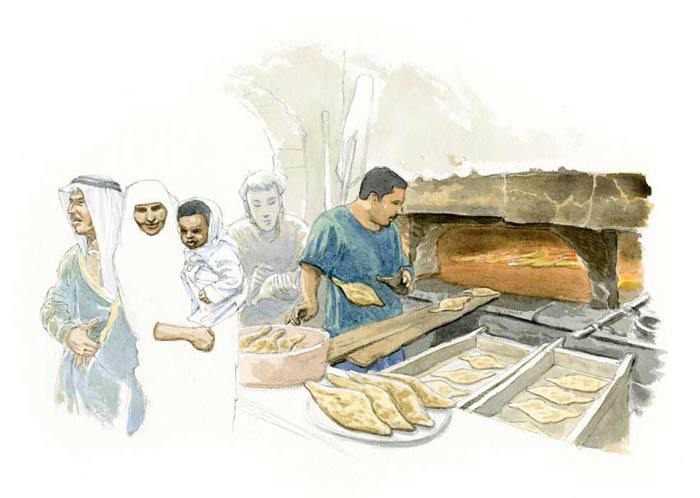Samoon

Form: Diamond-shaped
Country of origin: Iraq
What distinguishes it from other methods of bread making: Simple unleavened griddlecake identifiable by its distinctive shape
Category of bread: (2) Closely related to Indian chapati, Turkmen chorek, and Iranian sangak
Particularity: This is THE bread in Iraqi and it is never lacking
Ingredients: Wheat flour; baker’s yeast; milk; sugar; salt

Iraq
Samoon is to Iraqis what baladi is to Egyptians and baguettes to the French. It is a sort of bread that goes with everything and can be tucked into every nook and cranny of the day: it can cut your hunger when you need just a little something, or even bigger hunger if necessary; it goes with everything you eat. And even if it today it is made industrially, it remains one of the jewels of Iraqui bread baking.
Amongst the extremely wide variety of small and large breads, its shape can always identify this one. Out a large piece of rolled-out wheat dough containing a little yeast, milk, and sugar, a knife or razor is used to cut out diamond shapes that are slightly rounded on the ends. The dough “diamonds” are then left near the oven to rise before being put in to bake. If the ingredients are of good quality and these simple steps are followed, it is difficult to mess up samoon. Nevertheless, like everywhere, it’s experience that makes all the difference, and a samoon made by a baker in Baghdad will never have the same taste as the one you make at home.
The size of samoons (10 to 15 cm) generally requires that you buy a few of them to get you through the day, especially if you have a large family. They are inexpensive, so it is easy for bakers to stuff them in large plastic bags as they remove them in handfuls from the large wooden platters onto which they are placed throughout the day, one batch after another.

